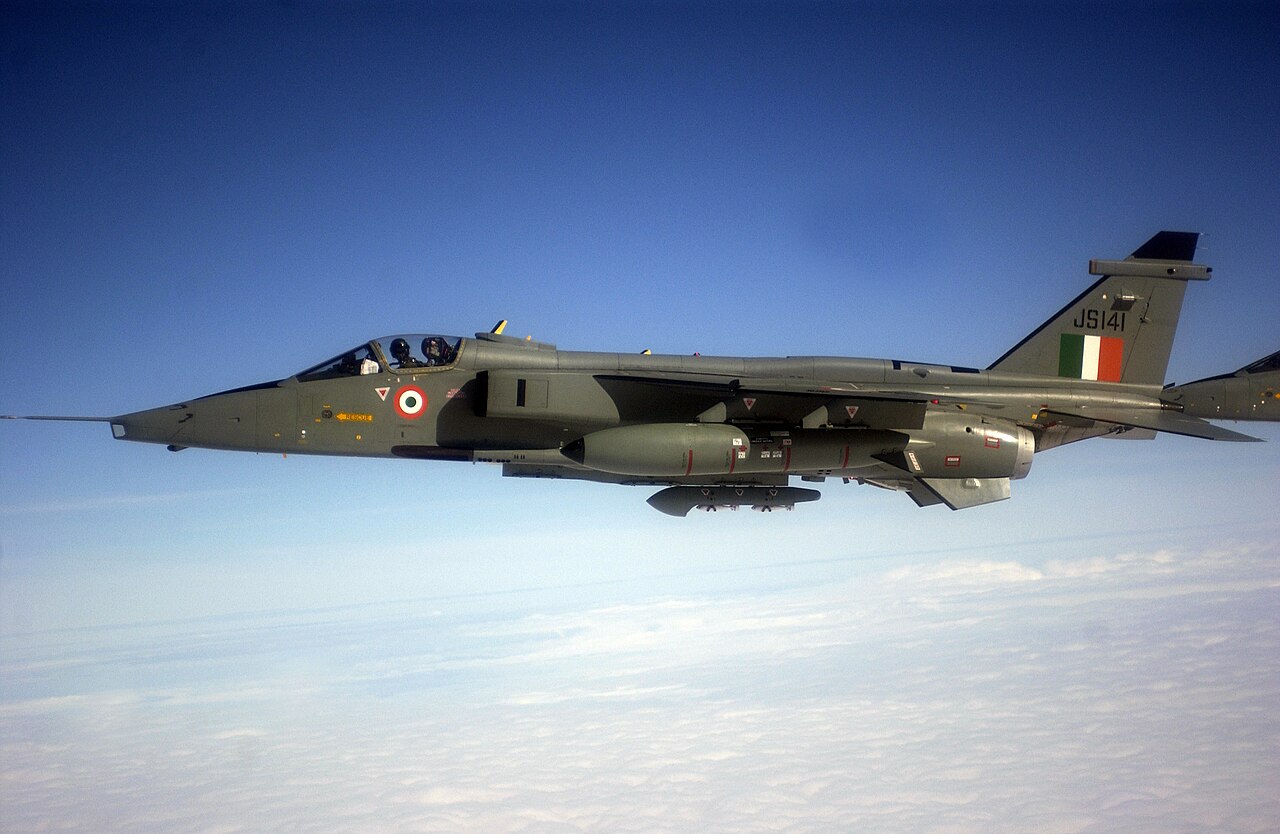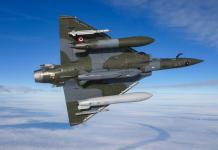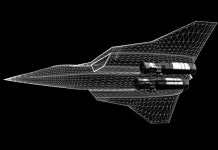For a long time, the low-flying Jaguars, also known as ‘ship sinkers,’ from the Number 6 squadron, have formed the only maritime strike squadron of the Indian Air Force (IAF).
The Number 6 Squadron ‘Dragons’ was resuscitated in 1951. Four-engine B-24 Liberators were inducted into the unit. The US-origin heavy bomber carried out the role assigned to the squadron: Maritime Reconnaissance and Air-Sea Rescue.
Maritime patrols or searches at sea at 500 feet over the ocean were quite challenging. This was not only because the sorties lasted for eight hours or more but also because of the special navigational challenges for this role.
After pioneering airborne maritime reconnaissance in the IAF, the Number 6 Squadron, ‘The Dragons,’ inducted the Jaguars in March 1987, when it replaced the Canberras. When the squadron received its first 4 Jaguars, “they streaked in at ultra-low level and joined two Canberras in vic formation for a flypast. For the next 15 minutes, Jaguars made their arrival known not only to the station but probably the entire city,” a squadron diary from that time notes.
The Number 6 squadron was stationed at Pune at that time. Later, they moved to their new base in Jamnagar, a city near the Arabian Sea.
Within months of inducting the Jaguars, the Dragons were on standby, keeping in view of the situation unfolding in Sri Lanka with the Tamil Rebels. They did not have to take part in the operation. The Squadron was operating both bomber aircraft, Canberras and Jaguars.

Golden Dome Or Golden Mirage? Is Trump Chasing A Dream As Critics Say Golden Dome Is Not Feasible?
On November 3, 1988, a Canberra aircraft of the Number 6 squadron took off armed with S-24 rocket bombs. It flew southwards from Trivandrum in southern India. The weather was “murky,” and the lone Canberra returned to its home base in Pune. The bomber was on standby in case the events in the Maldives took an ugly turn, as Indian armed forces were thwarting a coup attempt against the incumbent government.
With Canberra’s retirement, the Dragons became a pure Jaguar unit.
The induction of the Anglo-French fighter jets led to the evolution of maritime strike tactics.
Air Marshal Ravi ‘Dicey’ Sharma (retired) speaks about how the Number 6 squadron evolved maritime strike tactics using the aircraft’s tactical advantages. The Dragons used to fly the maritime Jaguars at ultra-low levels over the sea, usually at 100 ft, and going lower depended on the pilot’s skills.
As Air Marshal Sharma explained, the lower the aircraft went, the clearer the horizon became. “Any discontinuity in the horizon is the target.”
The Dragons honed their skills by combating MiG-29s, MiG-21s, and the Indian Navy’s Sea Harriers of INAS 300 ‘White Tigers’.
The number 6 squadron became adept at executing ultra-low-level maritime sorties and operated as far as 300 nautical miles out at sea on pitch-dark nights. The pilots of the maritime Jaguars were issued orange overalls and carried out regular dunking exercises with the Indian Navy. The Indian Navy’s destroyers, INS Ranvir and INS Ranvijay, became the sister ships of the Number 6 squadron.
The Tip Of Indian Air Force’s Maritime Spear
In 2007, the aircraft moved to Jamnagar, its permanent base. The Sarmat range was nearby, allowing the pilots to practice firing ammunition at will.
By then, the aircraft was upgraded to DARIN II (Display Attack and Ranging Inertial Navigation) standards. During a maritime training sortie, a DARIN II Jaguar’s Elta radar picked up a large ship on radar and went in for “attack.” The ship called on the guard frequency, “Fighter on course 250, this is USS Nimitz, identify yourself.”
The sea-skimming Jaguar did not respond but engaged reheat and flew back to Jamnagar, a squadron diary from that time notes.
The Jaguars did meet the American aircraft carrier USS Nimitz next month during Exercise Malabar in the Bay of Bengal. The wargames were conducted between the Indian, the US, Japanese, and Singaporean navies.
The Dragons operated from Car Nicobar Island in the Andaman and Nicobar chain of islands and flew with and against F-18s operating from USS Nimitz and USS Kitty Hawk. The two aircraft conducted missions together and against each other to hunt submarines and other targets in the region.
The ELTA radar and DARIN II combination allowed Jaguar to fly at length and breadth in the country. It has been representing India in international wargames. In December 2006, it participated in wargames with the Singapore Air Force. The Royal Singapore Air Force fighters F-16Cs and F-5Ss carried out simulated attacks on targets in the South China Sea.
The then-IAF Chief Air Chief Marshal SP Tyagi (retired) said, “The IAF should not stay cocooned anymore within the environs of its airspace. It is time to expand our horizons beyond our own borders, and these exercises are just the prelude.”
The Dragons To Get More Teeth
The oldest combat aircraft in the IAF after MiG-21s today is getting more teeth as the IAF is equipping Jaguars with MBDA’s Advanced Short Range Air-To-Air Missile (ASRAAM). The NGCCM (next-gen close combat missile) will replace the aging Matra R550 Magic on the Jaguar strike aircraft’s over-the-wing pylon.
ASRAAM has an infrared homing system that can track and hone in on a target range inside the line of sight. The missile weighs 88 kg and has a range of more than 25 km. The ASRAAM, a Within-Visual-Range (WVR) Dominance weapon, has been integrated with the Eurofighter Typhoon, Tornado, and F/A-18. It is also being integrated into the F-35 Lightning II.
It is an IIR (Imaging Infrared) missile, one of the most advanced IR missiles. Since IR missiles are passive, there is no information on the target when they are launched. With a Helmet-mounted Sighting Display, pilots can cue the missile’s head to look toward the target without turning the aircraft on that side.
The IR missiles, also known as fire-and-forget, will enable Jaguars to successfully engage various types of combat aircraft, transport platforms, cruise missiles, and unmanned aerial vehicles.
The Maritime Strike Squadrons Of The IAF
Now, the Sukhoi-30 MKI of the 222 squadron, based at Thanjavur in southern India, is also a maritime strike squadron. They are the first Sukhoi unit to be equipped with an air-launched supersonic cruise missile, Brahmos.
Maritime Strike capability in the Indian Ocean Region (IOR) is critical for the Indian forces, as the Chinese Navy’s surface ships and submarines have become frequent visitors to the region. Now, Sukhois and Jaguars both operate from the Andaman and Nicobar Islands, which sit at the entrance to the IOR close to the Malacca Straits, China’s chokepoint.
India has already begun developing its military assets in the archipelago. The northernmost point of the 572 islands is only 22 nautical miles from Myanmar, and its southernmost point is a mere 90 nautical miles from Indonesia. The islands control the Bay of Bengal, the Six Degree and Ten Degree channels, which are used by over 60,000 commercial vessels.
With all the upgrades, Jaguars will be an important part of the Indian Armed Forces’ maritime strategy to counter the Dragon in East—China.




